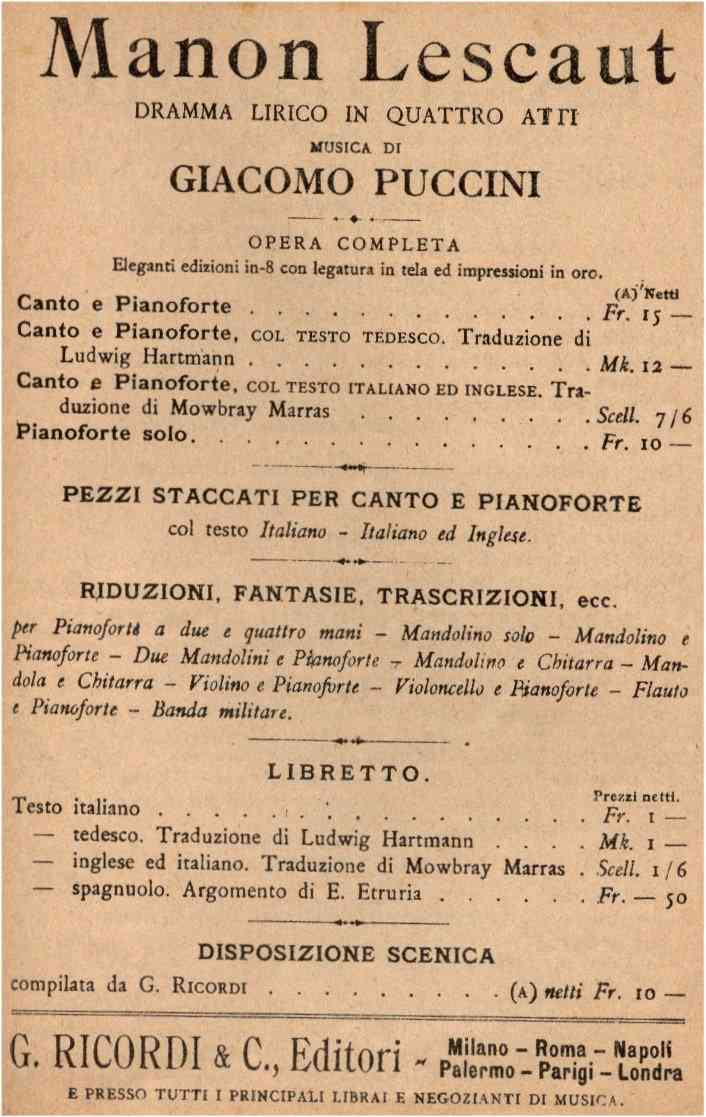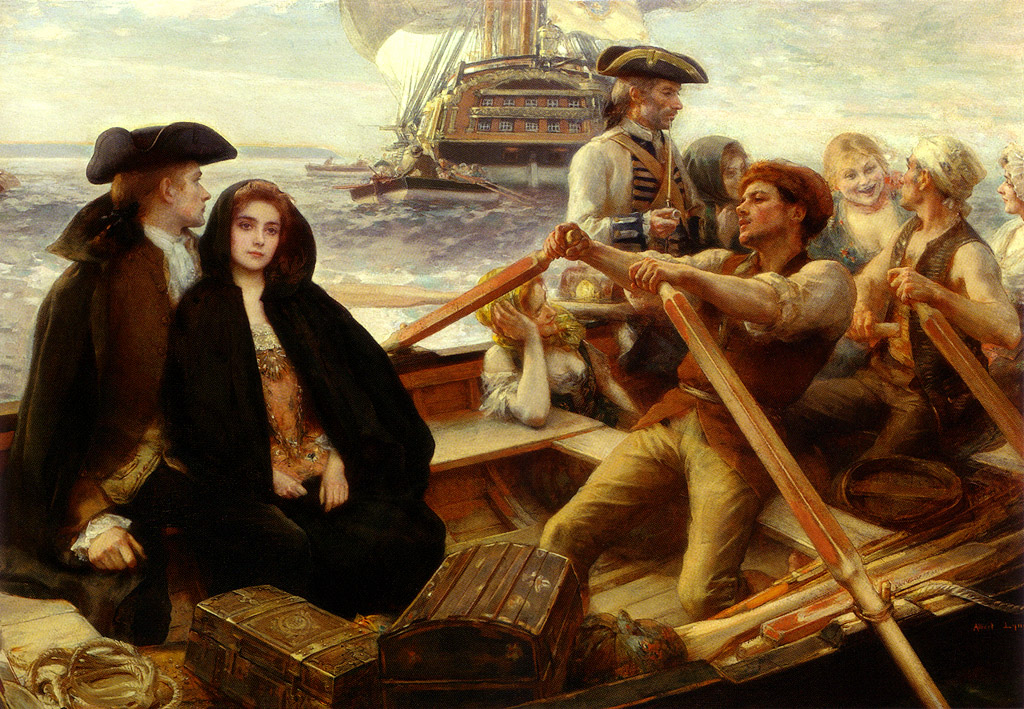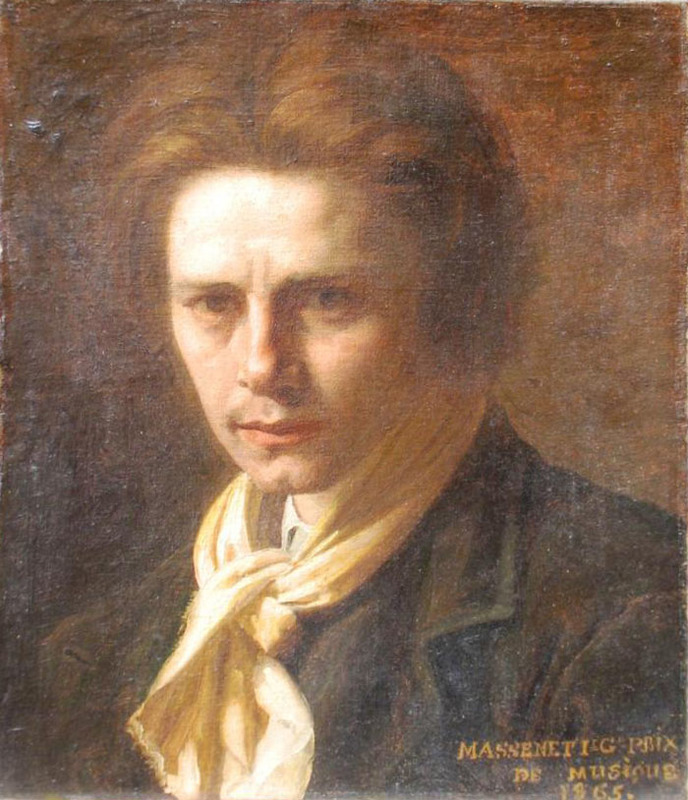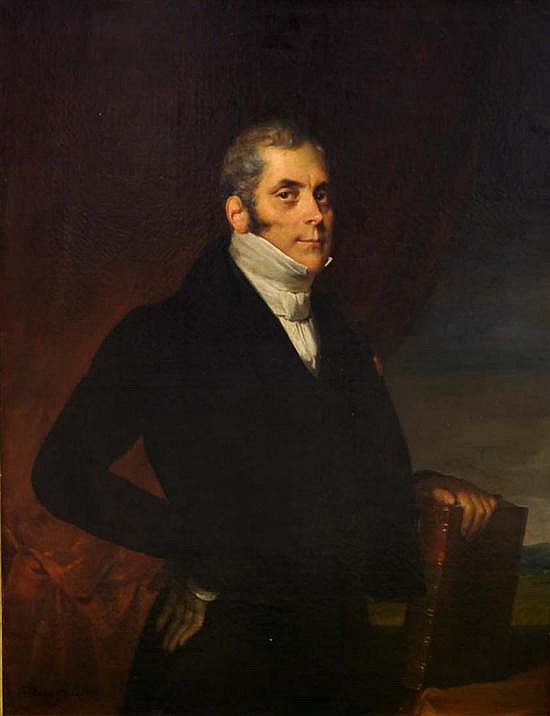|
Manon
''Manon'' () is an ''opéra comique'' in five acts by Jules Massenet to a French libretto by Henri Meilhac and Philippe Gille, based on the 1731 novel '' L'histoire du chevalier des Grieux et de Manon Lescaut'' by the Abbé Prévost. It was first performed at the Opéra-Comique in Paris on 19 January 1884, with sets designed by Eugène Carpezat (act 1), Auguste Alfred Rubé and Philippe Chaperon (acts 2 and 3), and Jean-Baptiste Lavastre (act 4). Prior to Massenet's work, Halévy (''Manon Lescaut'', ballet, 1830) and Auber (''Manon Lescaut'', opéra comique, 1856) had used the subject for musical stage works. Massenet also wrote a one-act sequel to ''Manon'', ''Le portrait de Manon'' (1894), involving the Chevalier des Grieux as an older man. The composer worked at the score of ''Manon'' at his country home outside Paris and also at a house at The Hague once occupied by Prévost himself. ''Manon'' is Massenet's most popular and enduring opera and, having "quickly conquered ... [...More Info...] [...Related Items...] OR: [Wikipedia] [Google] [Baidu] |
Manon Lescaut (Puccini)
''Manon Lescaut'' () is an Italian-language opera in four acts composed by Giacomo Puccini between 1889 and 1892 to a libretto by Luigi Illica, Marco Praga and , based on the 1731 novel '' Histoire du Chevalier des Grieux, et de Manon Lescaut'' by the Abbé Prévost. The opera was first performed in 1893 in Turin, at the Teatro Regio. Composition history The libretto is in Italian, and was cobbled together by five librettists whom Puccini employed: Ruggero Leoncavallo, Marco Praga, Giuseppe Giacosa, and Luigi Illica. The publisher, Giulio Ricordi, and the composer himself also contributed to the libretto. So confused was the authorship of the libretto that no one was credited on the title page of the original score. However, it was Illica and Giacosa who completed the libretto and went on to contribute the libretti to Puccini's next three – and most successful – works, ''La Bohème'', ''Tosca'' and ''Madama Butterfly''. Puccini took some musical elements in ''Manon L ... [...More Info...] [...Related Items...] OR: [Wikipedia] [Google] [Baidu] |
Manon Lescaut
''The Story of the Chevalier des Grieux and Manon Lescaut'' ( ) is a novel by Antoine François Prévost. Published in 1731, it is the seventh and final volume of ''Mémoires et aventures d'un homme de qualité'' (''Memoirs and Adventures of a Man of Quality''). The story, set in France and Louisiana in the early 18th century, follows the hero, the Chevalier des Grieux, and his lover, Manon Lescaut. Controversial in its time, the work was banned in France upon publication. Despite this, it became very popular and pirated editions were widely distributed. In a subsequent 1753 edition, the Abbé Prévost toned down some scandalous details and injected more moralizing disclaimers. The work was to become the most reprinted book in French Literature, with over 250 editions published between 1731 and 1981. Plot summary Seventeen-year-old Des Grieux, studying philosophy at Amiens, comes from a noble and landed family, but forfeits his hereditary wealth and incurs the disappointment of ... [...More Info...] [...Related Items...] OR: [Wikipedia] [Google] [Baidu] |
Jules Massenet
Jules Émile Frédéric Massenet (; 12 May 1842 – 13 August 1912) was a French composer of the Romantic era best known for his operas, of which he wrote more than thirty. The two most frequently staged are '' Manon'' (1884) and '' Werther'' (1892). He also composed oratorios, ballets, orchestral works, incidental music, piano pieces, songs and other music. While still a schoolboy, Massenet was admitted to France's principal music college, the Paris Conservatoire. There he studied under Ambroise Thomas, whom he greatly admired. After winning the country's top musical prize, the Prix de Rome, in 1863, he composed prolifically in many genres, but quickly became best known for his operas. Between 1867 and his death forty-five years later he wrote more than forty stage works in a wide variety of styles, from opéra-comique to grand-scale depictions of classical myths, romantic comedies, lyric dramas, as well as oratorios, cantatas and ballets. Massenet had a good sense o ... [...More Info...] [...Related Items...] OR: [Wikipedia] [Google] [Baidu] |
Manon Lescaut (Auber)
''Manon Lescaut'' is an opera or opéra comique in three acts by Daniel Auber to a libretto by Eugène Scribe, and, like Puccini's ''Manon Lescaut'' and Massenet's ''Manon'', is based on the Abbé Prévost's novel ''Manon Lescaut'' (1731). Auber's version is nowadays the least-performed of the three. Performance history The opera was premiered on 23 February 1856 by the Opéra-Comique at the second Salle Favart in Paris. It was the first work to be staged by that company that did not have a happy ending. It was staged in Liège in 1875, revived at the Opéra-Comique in 1882,Loewenberg, col. 920 and regularly performed in Germany as well as France. However, since the dawn of the twentieth century stagings have become something of a rarity. In North America, the opera was performed in 2006 by the Lyric Opera of Los Angeles at the Los Angeles Theatre. In 1990, it was staged at the Opéra Comique de Paris with the Picardy Sinfonietta in Amiens conducted by Patrick Fournillier. ... [...More Info...] [...Related Items...] OR: [Wikipedia] [Google] [Baidu] |
Le Portrait De Manon
''Le portrait de Manon'' is an opéra comique in one act by Jules Massenet to a French libretto by Georges Boyer. It is related to Massenet's 1884 opera ''Manon'', widely regarded to be his masterpiece. However ''Le portrait de Manon'' is rarely performed today. Performance history The opera was first performed at the Opéra Comique in Paris on 8 May 1894. After its premiere the work was performed at La Monnaie in November 1894 and the Teatro del Fondo in Naples in December 1894. The work received its United States premiere at the French Opera House in New Orleans in 1895. It was also produced at The Waldorf-Astoria Hotel on 13 December 1897. The Opéra Comique revived the opera in 1900 and it was mounted at the Théâtre Lyrique in September 1922,Irvine D. ''Massenet: a chronicle of his life and times.'' Amadeus Press, Portland, 1997 after which the work fell out of the performance repertory. After a more than 60-year absence from the stage, ''Le portrait de Manon'' was moun ... [...More Info...] [...Related Items...] OR: [Wikipedia] [Google] [Baidu] |
Giacomo Puccini
Giacomo Puccini ( Lucca, 22 December 1858Bruxelles, 29 November 1924) was an Italian composer known primarily for his operas. Regarded as the greatest and most successful proponent of Italian opera after Verdi, he was descended from a long line of composers, stemming from the late-Baroque era. Though his early work was firmly rooted in traditional late-19th-century Romantic Italian opera, he later developed his work in the realistic '' verismo'' style, of which he became one of the leading exponents. His most renowned works are '' La bohème'' (1896), '' Tosca'' (1900), '' Madama Butterfly'' (1904), and '' Turandot'' (1924), all of which are among the most frequently performed and recorded of all operas. Family and education Puccini was born Giacomo Antonio Domenico Michele Secondo Maria Puccini in Lucca, Italy, in 1858. He was the sixth of nine children of Michele Puccini (1813–1864) and Albina Magi (1830–1884). The Puccini family was established in Lucca as a lo ... [...More Info...] [...Related Items...] OR: [Wikipedia] [Google] [Baidu] |
Beverly Sills
Beverly Sills (May 25, 1929July 2, 2007) was an American operatic soprano whose peak career was between the 1950s and 1970s. Although she sang a repertoire from Handel and Mozart to Puccini, Massenet and Verdi, she was especially renowned for her performances in coloratura soprano roles in live opera and recordings. Sills was largely associated with the operas of Donizetti, of which she performed and recorded many roles. Her signature roles include the title role in Donizetti's '' Lucia di Lammermoor'', the title role in Massenet's ''Manon'', Marie in Donizetti's '' La fille du régiment'', the three heroines in Offenbach's '' Les contes d'Hoffmann'', Rosina in Rossini's ''The Barber of Seville'', Violetta in Verdi's ''La traviata'', and most notably Elisabetta in Donizetti's '' Roberto Devereux''. ''The New York Times'' noted, In her prime her technique was exemplary. She could dispatch coloratura roulades and embellishments, capped by radiant high Ds and E-flats, with ... [...More Info...] [...Related Items...] OR: [Wikipedia] [Google] [Baidu] |
Opéra-Comique
The Opéra-Comique is a Paris opera company which was founded around 1714 by some of the popular theatres of the Parisian fairs. In 1762 the company was merged with – and for a time took the name of – its chief rival, the Comédie-Italienne at the Hôtel de Bourgogne. It was also called the Théâtre-Italien up to about 1793, when it again became most commonly known as the Opéra-Comique. Today the company's official name is Théâtre national de l'Opéra-Comique, and its theatre, with a capacity of around 1,248 seats, sometimes referred to as the Salle Favart (the third on this site), is located at Place Boïeldieu in the 2nd arrondissement of Paris, not far from the Palais Garnier, one of the theatres of the Paris Opéra. The musicians and others associated with the Opéra-Comique have made important contributions to operatic history and tradition in France and to French opera. Its current mission is to reconnect with its history and discover its unique repertoire to en ... [...More Info...] [...Related Items...] OR: [Wikipedia] [Google] [Baidu] |
Daniel Auber
Daniel-François-Esprit Auber (; 29 January 178212 May 1871) was a French composer and director of the Paris Conservatoire. Born into an artistic family, Auber was at first an amateur composer before he took up writing operas professionally when the family's fortunes failed in 1820. He soon established a professional partnership with the librettist Eugène Scribe that lasted for 41 years and produced 39 operas, most of them commercial and critical successes. He is mostly associated with opéra-comique and composed 35 works in that genre. With Scribe he wrote the first French grand opera, ''La Muette de Portici'' (The Dumb Woman of Portici) in 1828, which paved the way for the large-scale works of Giacomo Meyerbeer. Auber held two important official musical posts. From 1842 to 1871 he was director of France's premier music academy, the Paris Conservatoire, which he expanded and modernised. From 1852 until the fall of the Second Empire in 1870 he was director of the imperial chape ... [...More Info...] [...Related Items...] OR: [Wikipedia] [Google] [Baidu] |
Lucrezia Bori
Lucrezia Bori (24 December 1887 – 14 May 1960) was a Spanish operatic singer, a lyric soprano and a tireless and effective fundraiser for the Metropolitan Opera. Biography Lucrezia Bori was born on 24 December 1887, in Valencia, Spain. Her real name was Lucrecia Borja y González de Riancho. Her father was an officer in the Spanish army. Her family were descended from the influential family of the Italian Renaissance, the House of Borgia and she herself was named after her ancestor, Lucrezia Borgia. Her voice had a unique timbre and transparent quality unlike any present-day singer. She studied in Milan with Vidal and made her debut at the Teatro Adriano in Rome as Micaëla in Bizet's '' Carmen'' on 31 October 1908. In December 1910, she made her debut at La Scala as Carolina in Cimarosa's ''Il matrimonio segreto''; the following year, she sang Octavian in the Italian premiere of ''Der Rosenkavalier'' there. Her career at the Metropolitan Opera began in the summer of 19 ... [...More Info...] [...Related Items...] OR: [Wikipedia] [Google] [Baidu] |
Geraldine Farrar
Alice Geraldine Farrar (February 28, 1882 – March 11, 1967) was an American lyric soprano who could also sing dramatic roles. She was noted for her beauty, acting ability, and "the intimate timbre of her voice." She had a large following among young women, who were nicknamed "Gerry-flappers". Biography Farrar was born in Melrose, Massachusetts, the daughter of baseball player Sidney Farrar, and his wife Henrietta Barnes. At age five, she began studying music in Boston Boston (), officially the City of Boston, is the state capital and most populous city of the Commonwealth of Massachusetts, as well as the cultural and financial center of the New England region of the United States. It is the 24th- mo ... and by 14 was giving recitals. Later she studied voice with the American soprano Emma Thursby in New York City, in Paris, and finally with the Italian baritone Francesco Graziani (baritone), Francesco Graziani in Berlin. Farrar created a sensation at the Berl ... [...More Info...] [...Related Items...] OR: [Wikipedia] [Google] [Baidu] |
Abbé Prévost
Antoine François Prévost d'Exiles ( , , ; 1 April 169725 November 1763), usually known simply as the Abbé Prévost, was a French priest, author, and novelist. Life and works He was born at Hesdin, Artois, and first appears with the full name of Prévost d'Exiles, in a letter to the booksellers of Amsterdam in 1731. His father, Lievin Prévost, was a lawyer, and several members of the family had embraced the ecclesiastical estate. His happy childhood ended abruptly, when he lost his mother and his younger favorite sister at the age of 14. Prévost was educated at the Jesuit , image = Ihs-logo.svg , image_size = 175px , caption = ChristogramOfficial seal of the Jesuits , abbreviation = SJ , nickname = Jesuits , formation = , founders = ... school of Hesdin, and in 1713 became a novice of the order in Paris, pursuing his studies at the same time at the prytanée National Militaire, college in ... [...More Info...] [...Related Items...] OR: [Wikipedia] [Google] [Baidu] |









